Introduction
Do Rabbits Lay Eggs: The world of nature is filled with fascinating creatures, each with its own unique characteristics and behaviors. Among these creatures, rabbits stand out as some of the most beloved and well-known animals. Yet, there is a curious misconception that has persisted for generations: the belief that rabbits lay eggs. While this notion may seem perplexing to some, it has managed to find its way into folklore, popular culture, and even the minds of individuals who have never closely observed these fluffy, long-eared mammals.
Rabbits are mammals, belonging to the order Lagomorpha, which includes hares and pikas as well. As mammals, rabbits bite give birth to live young, just like dogs, cats, and humans. This reproductive process is known as viviparity, wherein the offspring develop inside the mother’s body and are born as fully formed, albeit very tiny, versions of themselves.
The belief that rabbits lay eggs likely has its origins in various cultural and historical influences. One prominent source is the association between rabbits and the celebration of Easter. In many cultures, the Easter Bunny, a beloved symbol of the holiday, is believed to lay eggs and hide them for children to find. This amalgamation of the rabbit and egg symbolism has contributed to the misconception that rabbits lay eggs.
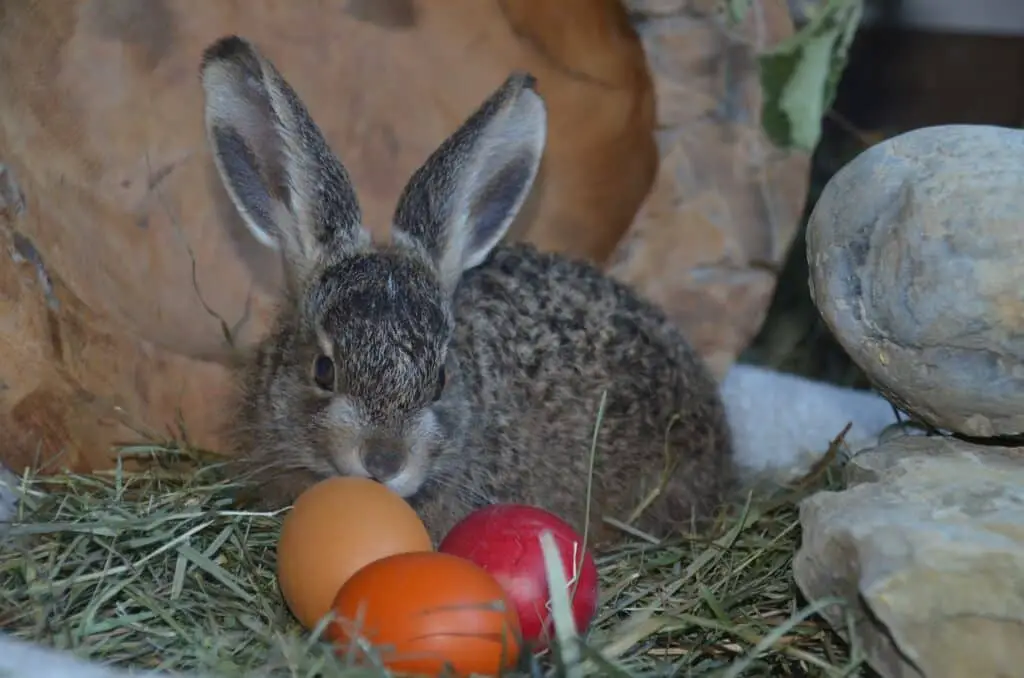
Do rabbits give birth or lay eggs?
So, rabbits comes in category 1, as they have visible ears and hair. Hence they give birth to young ones.
The Process of Rabbit Reproduction
Mating: The rabbit reproduction process begins with a male and a female rabbit, called a buck and a doe, respectively. When the female is in estrus or heat, she releases pheromones that attract the male.
Copulation: The buck and doe engage in copulation, which is a brief and usually vigorous process. During this, the male transfers sperm into the female’s reproductive tract.
Fertilization: Once the sperm reaches the eggs within the female’s reproductive tract, fertilization occurs. Unlike egg-laying animals, mammals have internal fertilization.
Gestation: After fertilization, the fertilized egg, or zygote, develops into an embryo. The embryo then implants itself into the lining of the female’s uterus. This process is known as gestation. For rabbits, the gestation period typically lasts around 31 days.
Live Birth: When the gestation period is complete, the female rabbit gives birth to live, fully developed baby rabbits, known as kits or kittens. A litter can consist of anywhere from a few to several dozen kits, depending on the rabbit species and environmental factors.
Why Do Rabbits Give Birth to Live Young
Parental Care: Giving birth to live offspring allows for greater parental care. Mother rabbits nurse and protect their young until they are sufficiently developed to fend for themselves. This increases the offspring’s chances of survival.
Internal Development: Internal development provides a controlled and stable environment for the developing embryo. This can be crucial for species like rabbits, which are prey animals and need to ensure their young are well-protected.
Energy Efficiency: Viviparity is often more energy-efficient than laying eggs because the developing embryo can receive nutrients directly from the mother’s bloodstream.
How do rabbits give birth?
Rabbits are pregnant for about thirty days. Their young are born in shallow burrows or nests lined with mama’s fur and covered with brush or grass. Babies are born with their eyes closed but mature quickly and are ready to leave the nest after about two weeks.
Pregnancy (Gestation): The process begins with the female rabbit, called a doe, becoming pregnant. After successful mating with a male rabbit, known as a buck, the doe’s body undergoes changes as the fertilized eggs develop into embryos. The gestation period for rabbits typically lasts around 31 days, although it can vary depending on factors such as the rabbit’s age and health.
Nest Building: As the pregnancy progresses, the doe instinctively starts preparing for the arrival of her kits by creating a nest. She pulls fur from her own belly and lines the nest with it, providing a soft and warm environment for her newborns. This fur-pulling behavior is distinctive and can be observed in the days leading up to birth.
Birth (Kindling): When the time is right, the pregnant doe enters labor. Rabbit labor is often a quiet and relatively discreet process compared to other animals. The doe will typically retreat to her nest, where she’ll give birth. Each kit is born individually, and the birth can occur quickly. The kits are born in a thin, transparent sac, which the mother will usually lick and chew open to expose the baby rabbit.
Cleaning and Nurturing: After the kit is born, the mother rabbit continues to lick and clean it to stimulate breathing and remove the amniotic fluid. This cleaning behavior also establishes a bond between the mother and her newborn. Once the kit is cleaned, the mother encourages it to nurse by positioning herself to allow the kit to access her teats.
Placenta and Umbilical Cord: It’s important to note that rabbits, like most mammals, usually eat the placenta and chew through the umbilical cord of each kit. This not only provides the doe with additional nutrients during this energy-intensive period but also helps to keep the nest clean and free from attracting potential predators.
Frequency of Births: Depending on the rabbit breed and individual characteristics, a doe can give birth to a litter of kits ranging from just a few to several dozen. After giving birth, she will continue to care for her kits by keeping them warm, feeding them, and protecting them in the nest.
Maternal Care: The mother rabbit plays a crucial role in the survival of her kits. She feeds them with her milk, which is rich in nutrients, and keeps them warm by snuggling with them in the nest. The kits are entirely dependent on their mother’s care during their early weeks of life.
Growing Independence: As the kits grow and develop, they become more independent and start to explore their surroundings. Around three weeks of age, they begin eating solid food in addition to nursing. Eventually, they will leave the nest and become fully self-sufficient.
Do female rabbits give birth?
Rabbits have evolved to reproduce quickly; pregnancies are short, lasting about a month and with an average litter size of five to eight kits (baby rabbits). Rabbits can then become pregnant again within hours of giving birth.
Mating and Pregnancy (Gestation): The reproductive process in rabbits begins with mating between a male rabbit (buck) and a female rabbit (doe). During mating, the buck transfers sperm into the doe’s reproductive tract, where fertilization of her eggs occurs. Following fertilization, the embryos begin to develop inside the doe’s uterus.
Gestation Period: After fertilization, the developing embryos go through a gestation period. For rabbits, this period typically lasts around 31 days, although it can vary slightly depending on factors like the rabbit’s age, health, and environmental conditions. During this time, the doe’s body undergoes changes to support the growth and development of her offspring.
Nest Preparation: As the gestation period progresses, the pregnant doe instinctively prepares for the birth of her kits (baby rabbits). She often starts to pull fur from her belly to line a nest, which she will use to keep her newborns warm and protected. Nest-building is a significant behavioral sign that the birth is imminent.
Labor and Birth: When it’s time to give birth, the doe usually seeks out her nest and enters into labor. Rabbit labor is a relatively quiet and private process. Unlike some animals, rabbits do not require assistance during birth. Each kit is born individually, enclosed in a thin, transparent sac. The mother will lick and chew open this sac to expose the baby rabbit, helping it take its first breath.
Cleaning and Nursing: After birth, the mother rabbit continues to clean her kits, stimulating them and ensuring they are free from amniotic fluid. She also begins nursing her kits, providing them with vital nutrients through her milk. This nursing behavior establishes a strong bond between the mother and her offspring.
Placenta and Umbilical Cord: The mother rabbit typically eats the placenta and chews through the umbilical cord of each kit. This not only helps her regain lost nutrients but also keeps the nest clean and reduces the risk of attracting predators.
Maternal Care: Female rabbits are highly maternal and protective of their young. They keep the kits warm, feed them, and defend the nest against potential threats. The kits are entirely dependent on their mother’s care during the initial weeks of life.
Growing Independence: As the kits grow and develop, they become more independent and begin to explore their surroundings. Around three weeks of age, they start to consume solid food in addition to nursing. Over time, they become fully self-sufficient.
Can my bunny have eggs?
Though this likely will not come as a surprise, it is worth mentioning that rabbits, as herbivores, should never be offered meat, eggs, or dairy.
Mammalian Reproduction: Rabbits belong to the order Lagomorpha, and they share the same reproductive characteristics as other mammals. Mammals are defined by their reproductive system, which involves internal fertilization, gestation (the development of embryos inside the mother’s body), and live birth.
Estrus Cycle: Female rabbits (does) have a regular reproductive cycle known as the estrus cycle. During this cycle, they become sexually receptive and can mate with male rabbits (bucks). If fertilization occurs, the doe will become pregnant and give birth to live young ones, called kits or kittens.
No Ovulation Without Mating: Unlike some animals, such as chickens, which lay eggs even without mating (through a process called parthenogenesis), rabbits do not produce eggs without mating. In rabbits, the release of eggs (ovulation) is typically triggered by mating with a male.
Egg-Laying vs. Live Birth: The distinction between egg-laying and live birth is a fundamental characteristic that categorizes animals into different classes. Birds and reptiles are examples of animals that lay eggs, whereas mammals, including rabbits, give birth to live offspring. This distinction is based on evolutionary history and reproductive strategies.
Rabbit Reproduction: The reproductive process in rabbits involves mating, fertilization, gestation, and the eventual birth of live kits. The kits are born in a relatively undeveloped state and are dependent on their mother’s care, including nursing, to grow and thrive.
Do rabbits get pregnant every time?
Do rabbits get pregnant every time they mate? As with most species, female rabbits can get pregnant easily – it only takes the once! To prevent any unwanted pregnancies or accidental litters, it’s important to get both rabbits neutered if they’re living together, or if you’re planning to try and bond them.
Reproductive Readiness: Female rabbits, known as does, have a reproductive cycle called the estrus cycle, also referred to as being “in heat.” During this cycle, which typically lasts for about 14-16 days, a doe becomes sexually receptive and can mate with a male rabbit, called a buck. This cycle repeats every few weeks, and it can vary among individual rabbits.
Mating Behavior: While does can mate during their estrus cycle, successful mating depends on their receptivity and the willingness of the buck. Sometimes, a buck may not be interested in mating, or a doe may reject a male’s advances. Thus, even when a doe is in heat, it doesn’t guarantee that she will mate and become pregnant every time.
Age and Health: The age and health of a rabbit play a significant role in successful reproduction. Younger, healthier rabbits are more likely to conceive and maintain a pregnancy compared to older or unhealthy individuals. Some health issues or stressors can lead to difficulties in breeding and conception.
Environmental Factors: The environment in which rabbits are kept can impact their reproductive success. Factors such as diet, housing conditions, and the presence of other rabbits can influence breeding behavior. Stressful or overcrowded conditions can reduce the likelihood of successful mating and pregnancy.
Gestation and Lactation: After mating, if fertilization occurs, the doe goes through a gestation period, which typically lasts around 31 days. During this time, she may not be receptive to mating with a buck. After giving birth to a litter of kits (baby rabbits), the doe enters a postpartum period during which she may not be fertile for some time, allowing her body to recover and care for her offspring.
Controlling Reproduction: Rabbit owners who wish to control their rabbits’ reproduction can do so through methods like spaying and neutering. These procedures can prevent unwanted pregnancies and help manage the rabbit population.
Can rabbits get pregnant while pregnant?
If your rabbit is actually pregnant, but you rebreed her thinking she is having a false pregnancy, she might get pregnant again. Rabbits have the strange ability to carry two litters at once, which is why it’s crucial to not let your does live with bucks.
Gestation Period: The gestation period in rabbits typically lasts around 31 days. During this time, the fertilized eggs develop into embryos within the doe’s uterus. This period is characterized by hormonal changes and physiological adaptations to support the growing offspring.
Hormonal Changes: Once pregnancy is established, the doe’s body produces hormones that inhibit her from going into estrus or heat, which is the fertile period when she would normally be receptive to mating. These hormonal changes effectively prevent her from ovulating and becoming pregnant again during her current pregnancy.
Physiological Adaptations: Pregnancy brings about significant physiological changes in the doe’s body to support the developing fetuses. Her energy and resources are directed toward nourishing and sustaining the growing embryos. This process ensures that the current pregnancy has the best chance of success.
Postpartum Period: After giving birth to a litter of kits (baby rabbits), the doe enters a postpartum period during which she is not immediately fertile. This postpartum rest allows her body to recover from the rigors of pregnancy and birth, and it helps ensure the health and survival of her current offspring.
Breeding Behavior: Female rabbits typically become less receptive to mating as they progress through pregnancy and during the postpartum period. Their primary focus shifts to caring for their current litter.
Do rabbits give birth every month?
Rabbits also have a short gestation period, between 25 and 28 days, which means they can have several litters of babies each year. Eastern cottontail rabbits can have between one and seven litters each year, and they average three or four litters annually, Animal Diversity Web reports.
Estrus Cycle: Female rabbits, known as does, have a reproductive cycle called the estrus cycle. This cycle typically lasts for about 14-16 days, and during this time, the doe becomes sexually receptive and can mate with a male rabbit, called a buck. However, the mere presence of an estrus cycle does not guarantee that the doe will become pregnant every time it occurs.
Gestation Period: After successful mating and fertilization, a doe goes through a gestation period, which typically lasts around 31 days. During gestation, the fertilized eggs develop into embryos within the doe’s uterus. She will not give birth during this time, and her body focuses on nourishing and supporting the growing fetuses.
Reproductive Rest: Following the birth of a litter of kits (baby rabbits), the doe enters a postpartum period. During this time, her reproductive system typically remains inactive for a period of several days to a few weeks. This postpartum rest is essential for her to recover from the previous pregnancy and birth and to care for her current offspring.
Environmental Factors: The reproductive frequency of rabbits can also be influenced by environmental factors such as food availability, housing conditions, and seasonal variations in daylight. These factors can affect the doe’s readiness to mate and reproduce.
Individual Variations: Not all does have the same reproductive frequency. Some may have more regular estrus cycles and shorter postpartum periods, while others may have longer intervals between pregnancies. These variations can be influenced by factors such as age, health, and genetics.
Breeding Control: Rabbit owners who wish to manage their rabbit’s reproduction can do so through measures such as spaying and neutering. These procedures can prevent unintended pregnancies and help control the breeding frequency of rabbits.
Is rabbit urine harmful when pregnant?
Rabbit litter trays pose no specific hazard to pregnant women, though standard hygiene precautions should always be taken and hands washed after dealing with rabbit urine and faeces.
General Safety Precautions
Rabbit urine, like the urine of most animals, can carry bacteria and other microorganisms. Therefore, it’s important to practice good hygiene when handling a rabbit, especially during pregnancy.
Pregnant individuals, like everyone else, should wash their hands thoroughly with soap and water after handling their pet rabbit or cleaning the rabbit’s cage. This helps reduce the risk of any potential contamination.
Rabbit Urine and Zoonotic Diseases
Zoonotic diseases are illnesses that can be transmitted from animals to humans. While it’s relatively rare, some diseases can potentially be transmitted through contact with rabbit urine, feces, or saliva. Common zoonotic diseases associated with rabbits include tularemia and leptospirosis.
Pregnant individuals, particularly those with weakened immune systems, should consult their healthcare provider and take extra precautions to minimize the risk of zoonotic disease transmission. These precautions may include wearing gloves when handling the rabbit and avoiding contact with urine or feces.
Maintaining a Clean Environment
It’s important to maintain a clean and sanitary environment for both the rabbit and the pregnant individual. Regularly cleaning the rabbit’s cage and litter box can help reduce the accumulation of urine and feces and minimize any potential risks.
Rabbit Health and Diet
Keeping the rabbit in good health through proper diet and veterinary care can help reduce the chances of illness and the potential for transmitting diseases.
Providing a balanced diet of hay, fresh vegetables, and high-quality rabbit pellets, along with clean, fresh water, contributes to the rabbit’s overall well-being.
Consulting a Healthcare Provider
Pregnant individuals should consult with their healthcare provider about their specific situation, especially if they have concerns about their pet rabbit or potential exposure to rabbit urine.
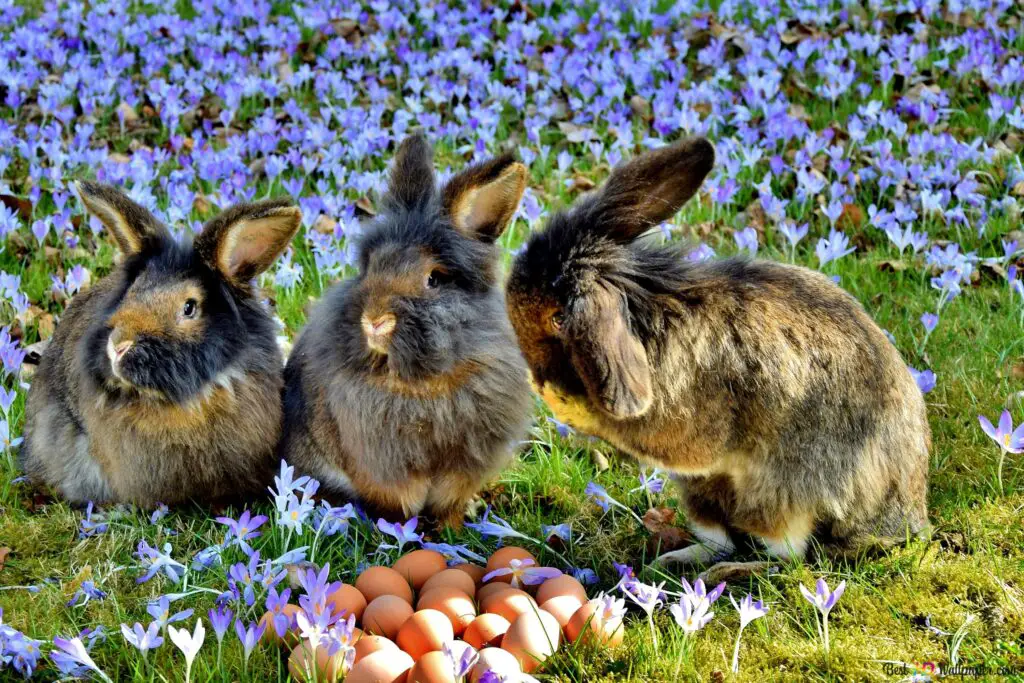
Conclusion
Rabbits, as we have clarified, are indeed mammals, and like all mammals, they give birth to live young. The notion that they lay eggs, while unfounded in biological reality, has been perpetuated through traditions such as the Easter Bunny, which combines the beloved image of rabbits with the concept of egg-laying. This symbolic fusion has led to widespread confusion and the enduring belief in the egg-laying rabbit.
However, it is important to recognize that myths and misconceptions often hold cultural and historical significance. The story of the egg-laying rabbit serves as a testament to the power of symbolism and folklore in shaping our understanding of the natural world. It reminds us that our perceptions of animals are not solely rooted in biological facts but can be deeply influenced by the stories we tell and the traditions we uphold.
In the end, while rabbits do not lay eggs, they continue to captivate our imaginations with their charming and prolific presence in the wild and in our lives. Through dispelling this myth, we gain a deeper appreciation for the diverse and often surprising ways in which the animal kingdom contributes to our shared human experience. The story of the egg-laying rabbit, like many myths, serves as a reminder that nature’s mysteries are as much a product of our cultural imagination as they are of scientific investigation.

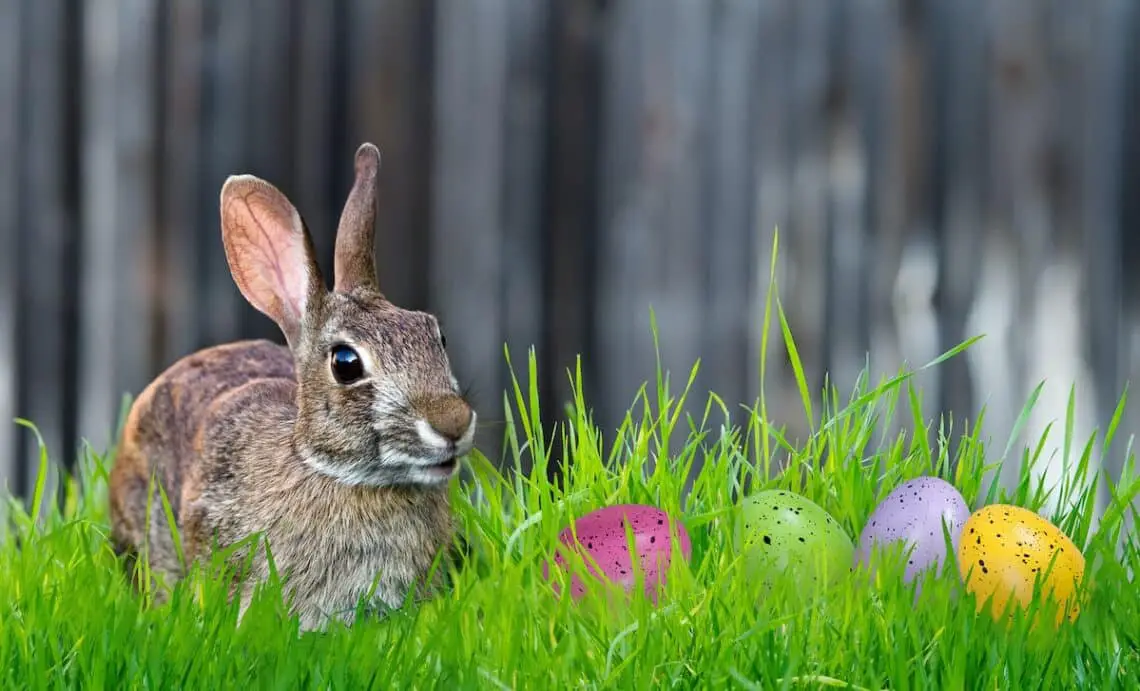
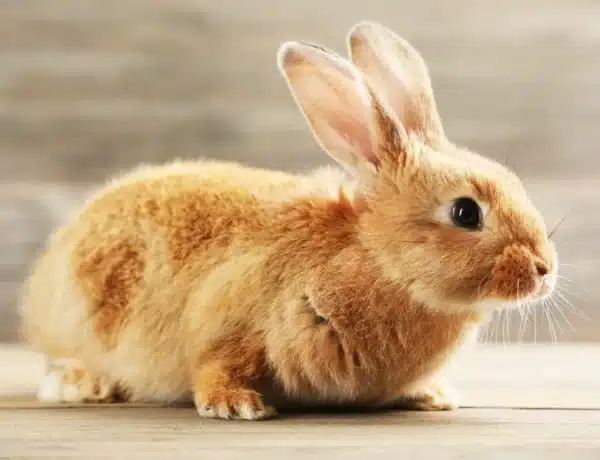
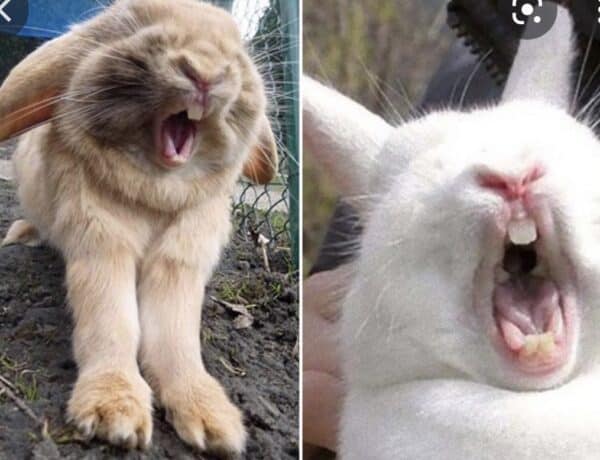

No Comments